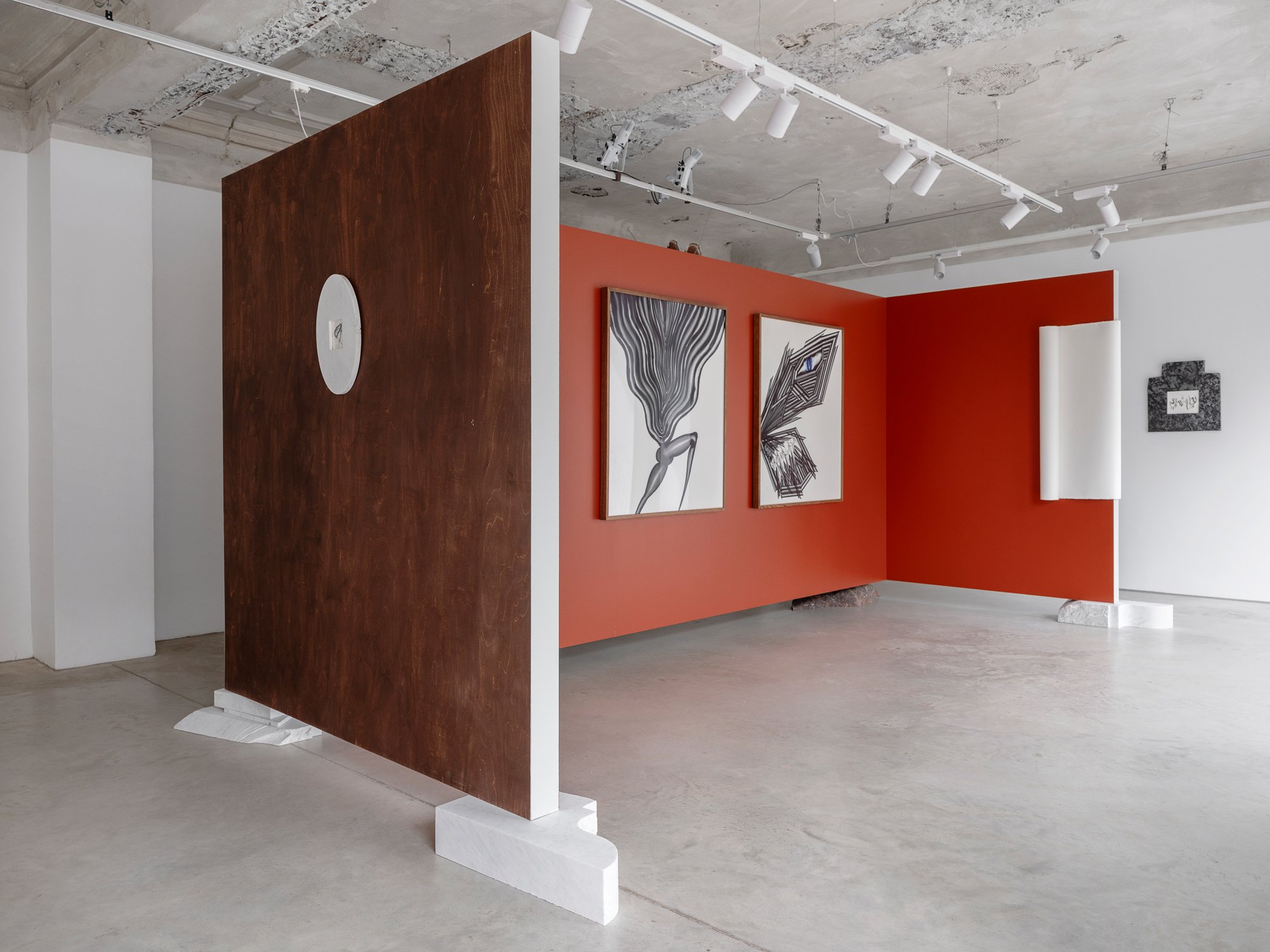Female Monsters
Sabīne Vernere
29.03.2025 - 26.04.2025
Galerija ASNI is pleased to present Sabīne Vernere’s latest solo exhibition, “Female Monsters”, in which the artist explores the feminine monster narrative in Western culture and psychoanalysis, seeking its origin in ancient Greek myths. She also reflects on the imprints this figure has left on her personal experience, expressing them in ink and egg tempera paintings, ceramics and marble. The exhibition will be on view from March 29 to April 26, 2025.
“Over the last three years, during my professional doctoral studies programme, I have examined feminine monster myths in depth, particularly the figures of Medusa, Pandora and the Sirens. I am intrigued by the question - how did this “evil” which terrifies both gods and humans come about? This figure of the sexualised she-devil is a core component of the deeply phallocentric narratives of Western culture and psychoanalysis. In my personal experience, I have also frequently found myself trapped in the role of this monster,” explains Vernere. “It is hardly unexpected that the origins of this “evil” are most often traced to acts of violence and domination enacted by male gods. For example, the legendary beauty Medusa, one of the three Gorgon sisters, was raped by the god of the sea Poseidon in the temple of Athena. However, while the culprit goes unpunished, Medusa’s lovely hair is turned into snakes and her irresistible gaze becomes a deadly weapon. Feminine monsters emerge from such acts of violence, and everything that these strong and beautiful beings subsequently do to survive or to regain their autonomy terrifies the patriarchy even more. Their demonization crystallizes into new mythologies of fear, yet even within this distorted enclosure, the female monster persists—dancing, singing, and thriving—whether in defiance or simply in the exhilaration of existence.” adds Vernere.
Vernere’s concluding exhibition of her professional doctoral studies programme encompasses her works made over the last three years, in which the artist examines ancient Greek myths and art in depth, searching for her “apotropaic sign”, i.e. a figure which stands up to the ignorant, accusing gazes which demonise feminine sexuality and power.
The first and oldest apotropaic sign found on armour is the head of Medusa. According to Homer, it adorned Athena’s breastplate and later King Agamemnon’s shield. Both mortals and gods deployed this symbol to put the fear of death into their foes. Vernere employs sexuality in her art as an apotropaic sign, i.e. a shield with Medusa’s head, to oppose the prevailing ignorance and treatment of sexuality as a taboo.
Sabīne Vernere (b. 1990, Kuldīga, Latvia) is a Latvian artist living in Riga. She is studying for a professional doctorate at the Art Academy of Latvia. Her formal education includes a Master’s from the Painting Department of the Faculty of Visual Arts at the Art Academy of Latvia and additional studies at the Academy of Fine Arts in Zagreb and the Royal Academy of Fine Arts in Antwerp. She has been in the SKETE painting residency at Savvaļa/Savage, Latvia (2022), JCE residence in Paris, FR (2022) and Cite residency in Paris, FR (2024).
Recent solo exhibitions include Dealing Temptation. SIRENS at the MABOCA exhibition space (2024), ANGLES MORTS at the Artists’ Union of Latvia Gallery, Riga, Latvia (2023); Sirens, Medusa and the Isle of Lotus-Eaters at Kuldīga Artists’ Residence, Kuldīga, Latvia (2022); O! at the artist-run space TUR_telpa, Riga, Latvia (2021); and (The) New Works at Kim? Contemporary Art Centre, Riga, Latvia (2021). Recent group exhibitions include Triquetra at Kogo Gallery, Tartu, Estonia (2023); and Growing Out, Growing Up? Contemporary Art Collecting in The Baltics at Zuzeum, Riga, Latvia (2022); Don’t Cry! Feminist Perspectives in Latvian Art: 1965–2023 at the Latvian National Museum of Art, Riga, Latvia (2023); In the Name of Desire at the Latvian National Museum of Art, Riga, Latvia (2024).
Her works are a part of the collections of the Latvian National Museum of Art, VV Foundation, Signet Bank and SEB Collection.
Supported by: Signet bank, GroGlass, VV Foundation, Culture Capital Foundation.













